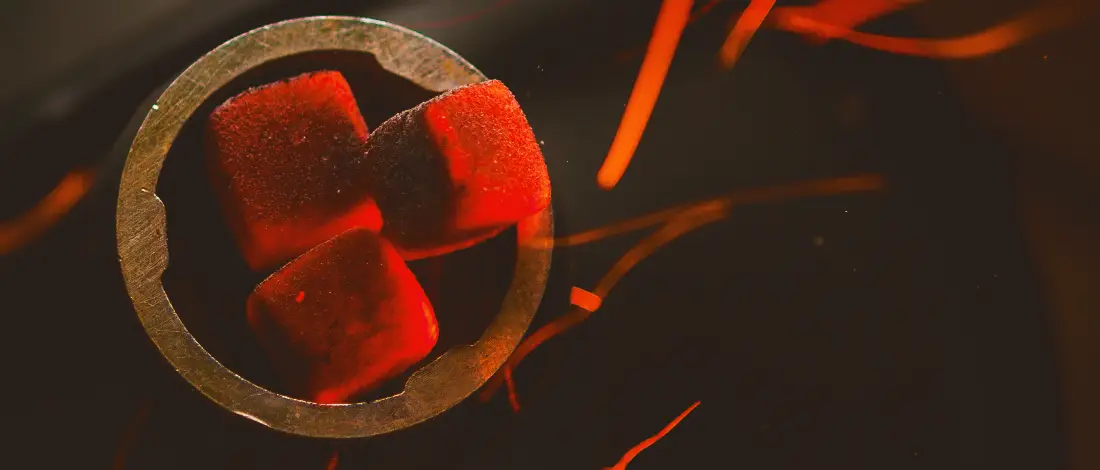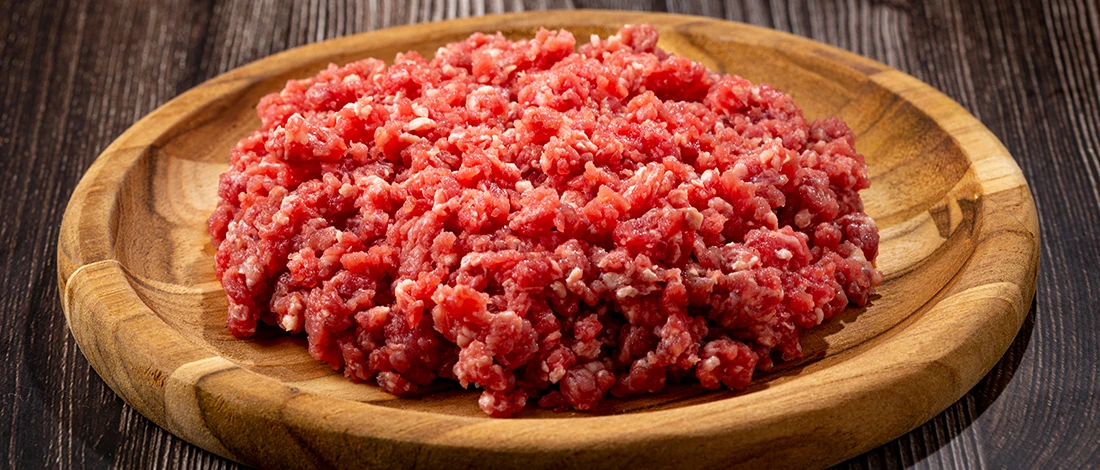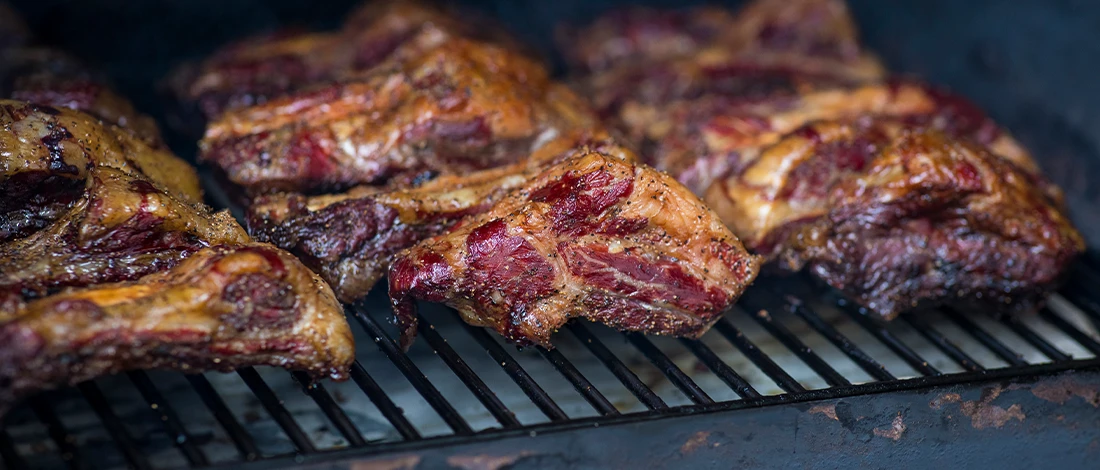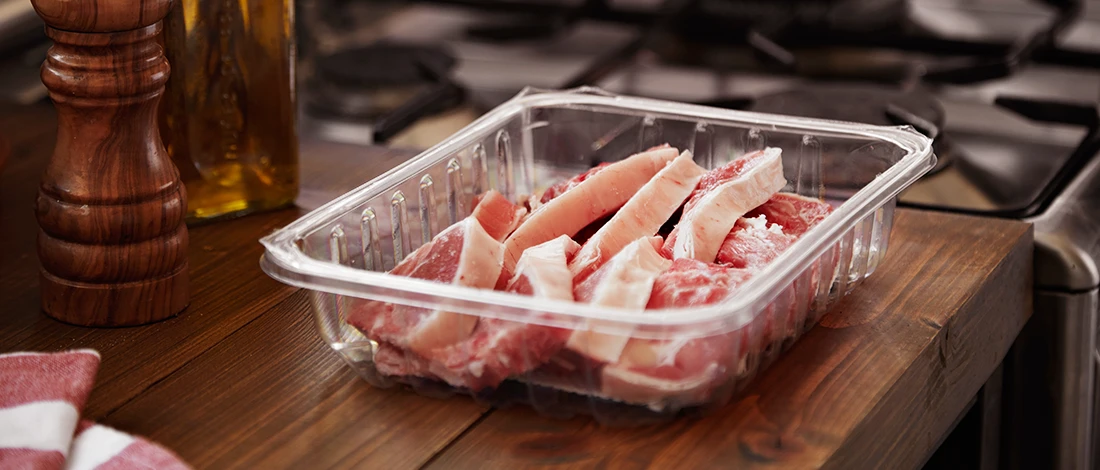As a devout carnivore dieter for six years, I have safely eaten my fair share of pork meat– chops, sausages, and bacon.
However, I've recently developed a keen taste for medium rare pork, but before fully indulging in this delicious meat, I researched whether eating medium rare pork is safe.
If you're a pork lover wanting to try medium rare pork, hop onto ButcherBox and order your fresh, high-quality pork right now.
I also sat down with my dietician to get her expert opinion.
Here's everything I found.
Quick Summary
- You can eat medium rare pork because it's safe as it cooks at a temperature of 137°F.
- Medium rare pork has more proteins than regular beef steak meat.
- It’s not advisable to eat raw pork meat, like ground meat, as they have foreign bacteria that should be destroyed at high temperatures (165°F).
Considerations for Eating Medium Rare Pork
Eating medium rare pork is safe, but you should observe the cooking criteria. Originally, 160°F was thought to be the ideal temperature for cooking meat that’s slightly pink for everyone to enjoy, but that recommendation has subsequently been adjusted to 145° [1].
You should observe this internal temperature at the thickest portion of the flesh; after that, let the cooked pork rest for a couple of minutes before serving.
According to the USDA, letting lean meat rest for at least 3 minutes after cooking allows hazardous germs to be destroyed by the carryover cooking at the stated temperature.
"A temperature of 137°F is required to eradicate the trichinella parasite, thus cooking pork medium rare at 145°F should eliminate any health risks related to it."
- Katherine Marengo, New Orleans Registered Dietician
It's worth noting that if you're working with ground pork products, it's not advisable to consume it medium rare. When grinding pork, you introduce air into the meat containing foreign germs and bacteria.
Also, during the grinding process, the grinder and tiny blades might allow germs on the surface to infiltrate the flesh, exposing you to salmonella and E-coli [2].
As a result, a substantially greater temperature is required to kill these germs that may cause food-borne illness.
Related Articles:
What Is Considered Medium Rare Pork?
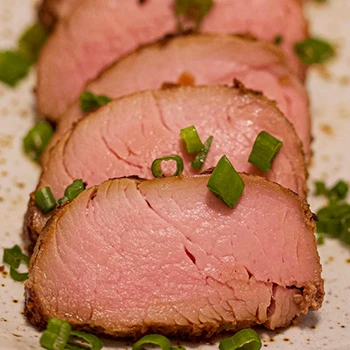
Pork meat cooked to an internal temperature of 145°F is considered medium rare pork. Medium rare pork is pink, delicious, tender, and juicy. It can be served in various forms, including bacon, smoked pork, sausages, and ham.
The best way to get perfect medium rare pork is to cook it over medium heat. To check for pork doneness, I recommend using a meat thermometer to track the temperature reading.
Although you can also probe it with a skewer to see whether the fluid flow is clear, this approach doesn’t guarantee that your meat has reached a safe temperature, and you may end up with undercooked meat.
To know your meat is perfectly cooked, insert your meat thermometer into the thickest part of the meat and away from bone, fat, or gristle. Monitor the temperature, and once the thermometer reads 145°F, you're good to go [3].
This USDA-recommended internal temperature holds for tough and tender pink pork pieces in the medium rare range.
If the pink tint bothers you, continue cooking pork until it registers 155°F. It will still taste good, but it will not be as juicy.
If you cook it past this stage, I recommend serving it with a nice, creamy sauce to cover off the dry pieces.
After you cook pork medium rare, let it sit for 5-10 minutes before slicing it against the grain.
Pork Cuts Best Served Medium Rare

The best cuts of pork that are ideal to be eaten as medium rare are lean pork cuts.
These lean cuts include:
- Pork tenderloin: A tenderloin is a long, slender, boneless piece of meat that comes from the backbone muscle of a pig. Because it's long and thin, I always remove it from the heat when the 145°F temperature is achieved to prevent drying out the juices. This lean pork quality meat is best served medium rare and pairs well with roasted potatoes and red wine.
- Pork chops: A raw pork chop, like any other meat chop, is a loin cut taken perpendicular to the pig's spine and generally consists of a rib or part of a vertebra. Pork chops are leaner and less processed than other pig cuts. I love to eat medium rare pork chops with applesauce and veggies.
- Pork loin: This is a lean and tender cut with a luscious fat cap. It is generated from pig rib cage dorsal tissue. It's a wide roast that's usually sold boneless to make it simpler to carve after roasting.
Nutritional Value of Medium Rare Pork
The nutritional value of commercially medium reared pork meat depends on the thickness of the cut and the cooking process.
1. Protein

Medium rare pork, like other meats, is mainly composed of protein. When dried, lean pork has up to 89% protein, making it a protein-dense diet [4].
100g of medium rare pork loin has 27g of protein, and pork chops of the same serving have around 24g of the same.
Medium rare pork also contains all nine necessary amino acids for body growth and upkeep. This meat is one of the complete protein sources accessible.
Read More: Which Meat Has the Most Protein?
2. Fat
The amount of fat in cooked pork varies. The fat consistency in medium rare pork is almost 10% to 16%, although this fat can be increased based on the type of cut and trimming during preparation [ 5].
Pink pork meat contains about equal amounts of saturated and unsaturated fat.
Research shows that the fatty acid content of medium rare pork significantly differs from that of other forms of meat, such as beef and veal.
Medium rare pork has a fatty acid called conjugated linoleic acid, which has low fatty consistency and a high unsaturated fat ratio [6].
3. Vitamins and Minerals

Medium rare pork contains a wide range of minerals and vitamins, including:
- Vitamin B12 (a water-soluble nutrient): Vitamin B12 is required for blood synthesis and brain function and is found abundantly in medium rare pork meat [7].
- Thiamine: Unlike other red meats such as beef and lamb, medium rare pork is exceptionally high in thiamine. Thiamine is a B vitamin essential for many bodily functions [8].
- Zinc: Zinc is a crucial element plentiful in medium rare pork that promotes immune system activation [9].
- Selenium: Cooked medium rare pork loins are high in selenium.
- Niacin: Niacin, often known as vitamin B3, is a B vitamin essential for development and metabolism in the body [10].
- Phosphorus: Phosphorus is abundant and pervasive in all slices of medium rare pork and is required for overall bodily growth.
- Iron: Medium rare pork steaks have less iron than lamb or beef. However, it is still a good source of iron since the digestive tract can readily absorb iron from pig flesh [11].
FAQs
What Color Is Medium Rare Pork?
Medium rare pork is pale white with pink at the center of the cut. Also, the juices that come out of the meat are faintly pink.
Is Medium Rare Pork Undercooked?
No, medium rare pork is not undercooked. Medium rare pork has achieved a safe internal temperature of 145° F and is considered cooked and safe to eat.
How Can You Tell If Pork Is Slightly Undercooked?
You can tell if pork is slightly undercooked by looking at the temperature on the thermometer or by poking the meat with a skewer to see the color of the juices. If the flowing juices are red and with blood, the temperature is less than 145 degrees.
References:
- https://www.foodsafety.gov/food-safety-charts/safe-minimum-internal-temperatures
- https://www.consumerreports.org/ground-meats/is-our-ground-meat-safe-to-eat-a2700598982/
- https://www.usda.gov/media/blog/2011/05/25/cooking-meat-check-new-recommended-temperatures
- https://pubmed.ncbi.nlm.nih.gov/22074802/
- https://www.researchgate.net/publication/348511287_Meat_Quality_Characteristics_of_Pork_Bellies_in_Relation_to_Fat_Level
- https://pubmed.ncbi.nlm.nih.gov/15159259/
- https://www.hsph.harvard.edu/nutritionsource/vitamin-b12/
- https://ods.od.nih.gov/factsheets/Thiamin-HealthProfessional/
- https://www.ncbi.nlm.nih.gov/pmc/articles/PMC2277319/
- https://www.ncbi.nlm.nih.gov/pmc/articles/PMC7551072/
- https://pubmed.ncbi.nlm.nih.gov/16115336/


